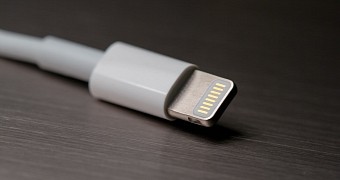Remember the floppy drive? The 1.44MB storage device was too small in capacity and too big in size for a modern computer. Apple decided to remove it, and the world went on fire. The CD and DVD were the future.
Remember Flash? Steve Jobs didn't even want to consider it for his mobile devices, and everyone called him an arrogant old man. Apple has always followed in the footsteps of ice skater Wayne Gretzky: "Skate to where the puck is going to be, not where it has been." And they were (most of the times) right.
Quality versus convenience
The most recent debate in the Apple world is all about removing the headphone jack and replacing it with a digital connector, such as the lightning port or a USB Type-C one. It all started with some rumors confirmed by the Wall Street Journal. The gist of it is that the lightning port would serve as a double connector - charging the phone and serving as an EarPods plug. This may help Apple get to a thinner device and improve its water resistance.
Let's discuss the physical side of things. A lightning port is definitely thinner than the audio jack, but Apple is not in any way bothered by the 3.5mm jack. Devices like the iPod Touch and the iPad Nano have an audio jack too, and they are significantly thinner than the iPhone. Sure enough, if we're talking "glass pane" thin, like the iPhone of the 2020s may look, then such a connector may be a problem. But for now, that is not the case.
Having a lightning port instead of the audio jack does provide something that may be useful - depth. That may add a few millimeters for the internals of the iPhone and provide increased space for the battery or it might get the screen closer to the bottom edge. Is that good for the user? Well, it can be, but this not reason enough to ditch all our audio accessories and go for a new connector.
Steve Jobs himself said once that, with the iPod, consumers opted for convenience. There was no need for a player that was using high-end files when the MP3 was around. Having a small device playing a huge collection of music tracks was good enough for the average consumer, hence the success of the iPod in the first place.
Digital and the quality of the Audio
One of the main arguments in favor of a digital connector is the quality of the audio that can be provided. Apple can adjust the audio on the device itself and then send better quality through a digital connector to a pair of headphones that do not have to be expensive or have sophisticated chips and parts in order to adjust the audio.
On the other hand, a digital connector can impose limits on DRM-ed files. So you may not be able to play any music file because the chip inside the connector knows exactly what you are playing. That would be a big minus for the users.
Just to balance that, one big plus is the fact that your headphones may be able to control the iPhone with a finer grain. For now, you can only press the volume buttons up and down on the EarPods wire to increase the volume, or press twice to move forward or backwards. Imagine you could send a signal to change the app, play a certain song and do many other things with the remote on your wire.
How about using the EarPods to transmit vital signs to your device? Your iPhone could measure your heart bits and blood pressure through your ears canal and alert you if something is out of the ordinary. A digital port is a great resource to input data to your device, and it can be the beginning of a brand new category of apps and devices.
Now, one could say that we already have a Lightning Port connector on the device, and there is no need to remove the headphone jack. Sure, but this is just one of the many uses of that port.
Wireless versus tethered
The future is surely wireless, so why would Apple remove the headphone jack to replace it with EarPods using the lightning port when it could just sell a Bluetooth headset?
Well, there are a few problems with Bluetooth, and the first big one is the latency. When playing a video game or streaming video, the audio may experience some lag, and that is a big turnoff for users. On the other hand, wireless headsets are more expensive, and they come with limited battery, so using them adds an extra layer of chargers and waiting time for the device to get ready for use.
Sure enough, the solution is simple - we could get some lightning powered earbuds. Is the battery low? Add some "juice" via the lightning port, just like with the Apple Pencil, and you are good to go for another hour or so.
Compatibility issues
Let's say Apple goes for a digital connector, but the Lightning Port is not in the MacBook or any Android device. You would need to buy a $29 dongle just to use it with your other (or older) devices.
Apple doesn't really care about compatibility with Android, but the MacBook already has a port that is thin enough and works fine with all kinds of inputs and outputs - USB Type-C. Maybe that is the future of Audio: compatible with Macs, PCs, and Android Phones, fast and thin.

 14 DAY TRIAL //
14 DAY TRIAL //